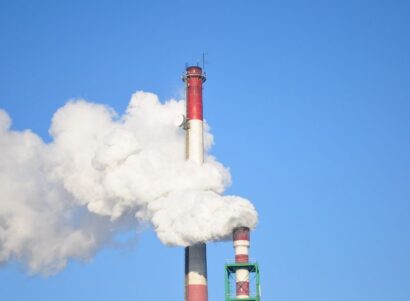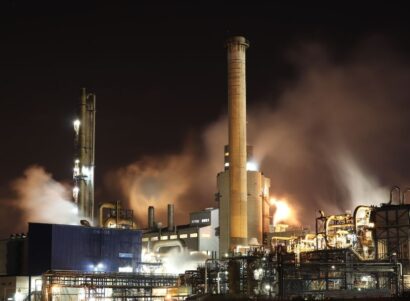Background
Research has shown that leaks from residential natural gas appliances are common, despite the presence of odorants. Gas leaks have also been shown to contain climate-warming methane, as well as a range of health-damaging air pollutants that can affect indoor air quality. This study examines both the chemical composition of natural gas and odorants effectiveness in aiding leak detection.
Researchers from PSE collected over 580 unburned natural gas samples from 481 residences in 17 cities across the United States and Canada. These samples were then analyzed for methane, hazardous air pollutants (HAP), and the sulfur-based odorants commonly used to assist in leak detection. Using this data, researchers estimated how indoor gas leaks can potentially evade scent detection, thereby heightening the risks posed by the associated methane emissions and indoor air pollution. Their findings were published in the peer-reviewed journal Environmental Research Letters.
Key Findings
This study adds to the growing body of evidence suggesting that distribution-grade natural gas contains a range of hazardous air pollutants, which can have adverse impacts for indoor air quality and public health. Specifically, this study indicates that benzene and other hazardous air pollutants are present in nearly all natural gas that is supplied to households, buildings and businesses throughout North America, which builds on existing evidence that natural gas leakage poses not only climate, but also human health risks. In addition, this study shows that the concentration of odorants in natural gas varies depending on location and that these variations can contribute to scenarios where exposure to hazardous air pollutants may persist without detection for long periods of time. These findings are discussed in more detail below.
Natural Gas Composition
Nearly all samples of natural gas in this study contained benzene and other volatile organic compounds. Overall, over 99 percent of the 587 samples collected contained hazardous air pollutants, with the most prevalent of these being benzene (97% of samples), toluene (97%), and hexane (99%). However, the concentration of these pollutants varied considerably depending on location. For example, Vancouver, Los Angeles, Calgary, and Denver had at least 2x higher mean benzene concentrations than other cities sampled, with Vancouver exhibiting a nearly 50x greater mean benzene level than the lowest-concentration city (Boston). In sum, the results of this study indicate that gas in the North American gas distribution system that flows to homes, buildings and businesses nearly always contains hazardous air pollutants, including the known human carcinogen, benzene.
Odorant Content and Concentration
Odorants are intentionally added to natural gas to aid in leak detection. Overall, researchers found that the concentration of odorants in natural gas varied substantially within and across cities, indicating a lack of standardization. Houston, for instance, had 5x higher mean tert-butyl mercaptan levels than Toronto. Some gas samples contained no detectable odorants at all indicating that a leak would be odorless.
Prevalence and Detectability of Leaks
Researchers found that four percent of all homes tested in the study were experiencing a relatively large natural gas leak. Of these, researchers identified 13 ambient-type natural gas leaks whereby methane concentrations were steadily elevated throughout the entire interior living space. In one case, the research team identified a large gas leak in the basement of a four-unit apartment that required emergency action. This very large leak was immediately recognized by the scientists by odor, however, the study participant (and tenants of the other three building apartments units) reported not being able to smell the leak.
Given their findings, the researchers believe that the U.S. Environmental Protection Agency’s emissions inventories for benzene are likely underestimated. They estimate that current U.S. and Canadian emissions inventories are missing an additional 25,000 and 4,000 lbs benzene/yr through downstream natural gas leakage, respectively.
Conclusions
This study indicates that benzene and other hazardous air pollutants are present in nearly all natural gas that is supplied to households, buildings and businesses throughout North America, which builds on existing evidence that natural gas leakage poses not only climate, but also human health risks. The researchers conclude that regulators and consumers would benefit from open access to natural gas composition data to better understand potential emissions, exposures, and odor-mediated gas leak safety levels. Systematic efforts to reduce leaks—either through improved leak detection and mitigation or reducing usage altogether—can reduce exposures, yielding indoor air quality and public health benefits.
Given methane’s effect on rising temperatures, benzene’s toxicity, individuals wide-ranging smelling ability for odorants, and the prevalence of indoor gas leaks, results from this study indicate cause for concern regarding the sole reliance on odorization to alert and protect all occupants from indoor leaks and associated air pollution. However, gas leak detection and recognition could be improved if odorization standards were stronger and expanded beyond relying on the human sense of smell.
Natural gas odorization as a low-level leak detection mechanism has been understudied, and policies around odorization in Canada and the U.S. should consider stricter standards like increasing the minimum odorization level. Results from the study also indicate that benzene and natural gas odorant content can be better understood with randomized and targeted source-specific monitoring at the distribution network level, with more frequent monitoring to characterize long-tailed trace gas distributions.
The researchers recommend that readily-available, sensitive gas leak detectors should be required in all buildings with gas appliances, similar to smoke alarms or carbon monoxide detectors. Methane sensors could alert occupants of smaller leaks that could pose climate and indoor air quality issues, and could be effective for individuals suffering from odor insensitivity, or settings where high ventilation might dilute leaks, e.g., commercial kitchens.

 Study
Study






